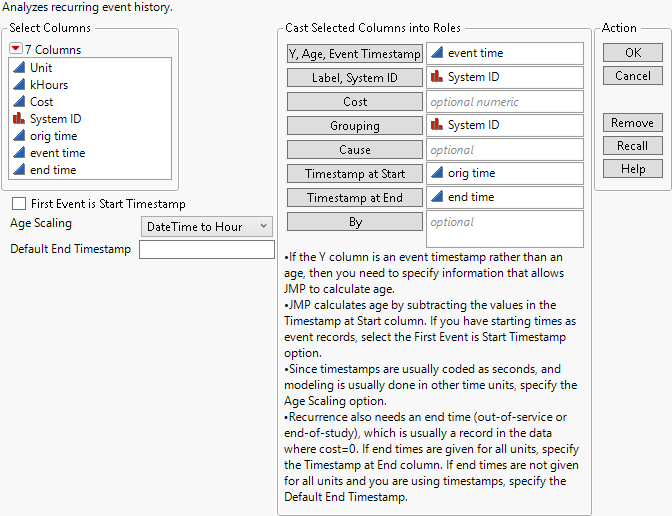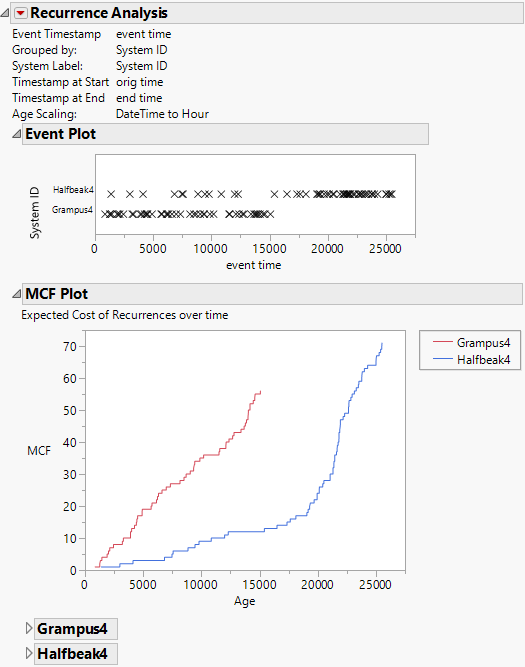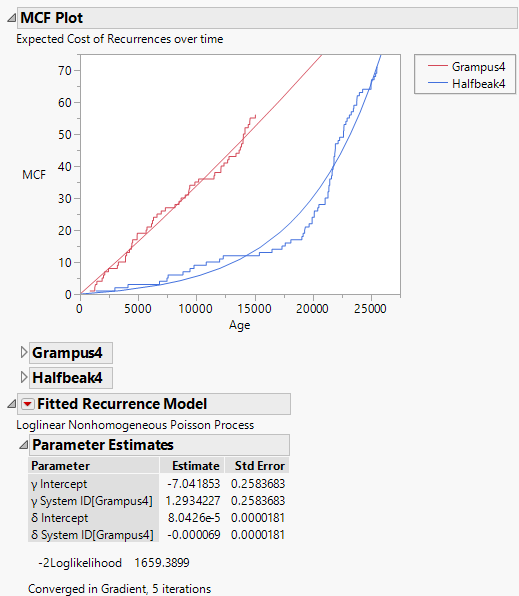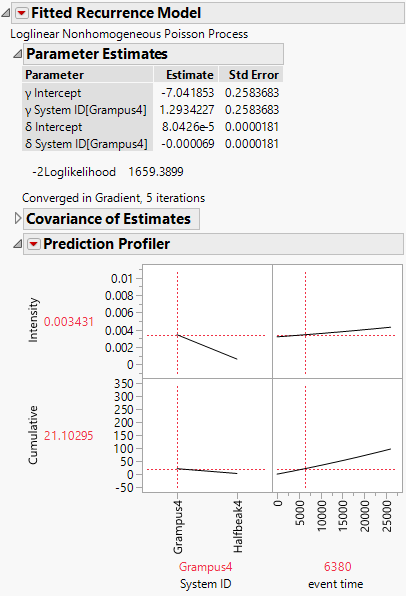Diesel Ship Engines Example
The sample data table Diesel Ship Engines.jmp contains data on engine repair times for two ships (Grampus4 and Halfbeak4) that have been in service for an extended period of time. See Meeker and Escobar (1998). You want to examine the progression of repairs and gain a sense of how often repairs might need to be done in the future. These observations can help you decide when an engine should be taken out of service.
1. Select Help > Sample Data Library and open Reliability/Diesel Ship Engines.jmp.
2. Ensure that rows 57 and 129 are set as Excluded.
Note: If they are not set to Excluded, select rows 57 and 129 and select Rows > Exclude/Unexclude.
3. Select Analyze > Reliability and Survival > Recurrence Analysis.
4. Complete the launch window as shown in Figure 6.11.
Figure 6.11 Diesel Ship Engines Launch Window
5. Click OK.
Figure 6.12 Diesel Ship Engines Report
Looking at the Event Plot, you can see that repairs for the Grampus4 engine have been relatively consistent. Repairs for the Halfbeak4 engine have been more sporadic, and there appears to be an abrupt increase in repairs somewhere around the 19,000 hour mark. This increase is even more obvious in the MCF Plot.
Continue your analysis by fitting a parametric model to help predict future performance.
6. Click the Recurrence Analysis red triangle and select Fit Model.
7. In the Recurrence Model Specification, select the Loglinear Nonhomogeneous Poisson Process.
8. Add the System ID column as both a Scale Effect and a Shape Effect.
9. Click Run Model.
Figure 6.13 Diesel Ship Engines Fitted Model
10. Click the Fitted Recurrence Model red triangle and select Profiler.
Figure 6.14 Diesel Ship Profiler
Compare the number of future repairs for the Grampus4 engine to the Halfbeak4 engine. Change the event time value to see the effect on the cumulative number of future repairs.
• To see how many repairs will be needed after 30,000 hours of service, type 30,000 for the event time. The Grampus4 engine will require about 114 repairs. To see the values for Halfbeak4, click and drag the dotted line from Grampus4 to Halfbeak4. The Halfbeak4 engine will require about 140 repairs.
• To see how many repairs will be needed after 80,000 hours of service, type 80,000 for the event time. The Halfbeak4 engine will require about 248,169 repairs. Click and drag the dotted line from Halfbeak4 to Grampus4. The Grampus4 engine will require about 418 repairs.
You can conclude that in the future, the Halfbeak4 engine will require many more repairs than the Grampus4 engine.



